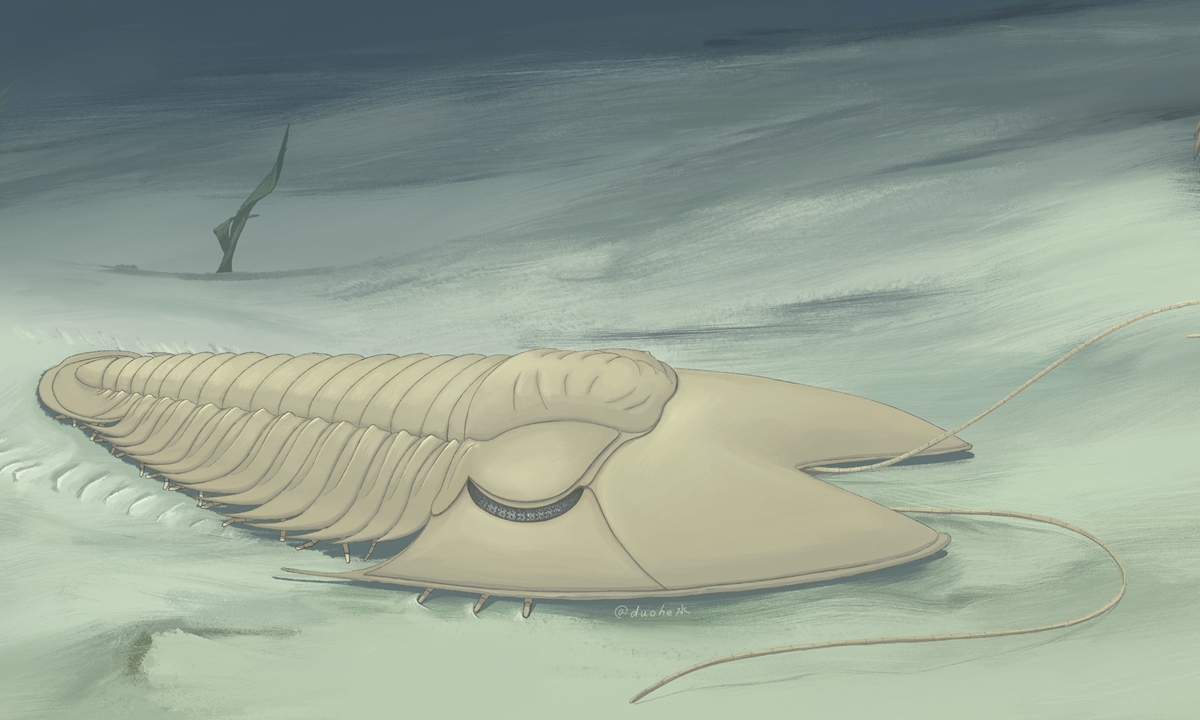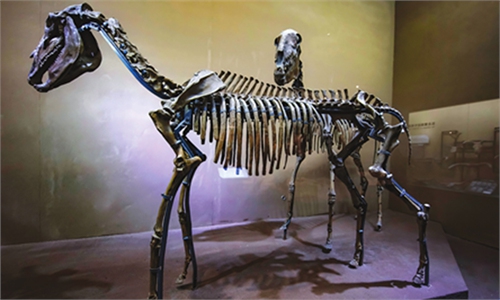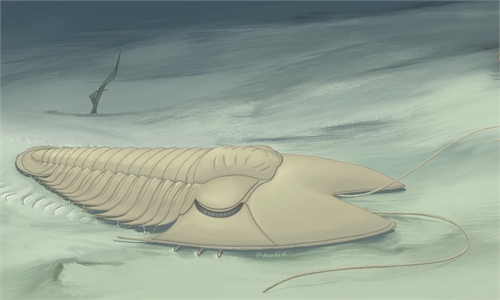
The illustration of the ancient Phantaspis auritus. Photo: Courtesy of Nanjing Institute of Geology and Palaeonotology, Chinese Academy of Sciences
Scientists have discovered the fossil of an ancient arthropod whose distinctive double-lobate shaped head resembles "rabbit ears."
The newly discovered insect, Phantaspis auritus, was discovered in Weifang, East China's Shangdong Province, according to an announcement from the Nanjing Institute of Geology and Palaeonotology, Chinese Academy of Sciences on Monday.
Living during the Cambrian period roughly 500 million years ago, the ancient trilobite was about four centimeters in length. Its appearance stands out from the "conservative" round head shape of more commonly known trilobites such as Ptychopariids. It possessed a long and narrow head that was nearly half of the total length of its dorsal shell. The very front of its head, or the preglabellar area, was extremely long with an obvious notch that made the creature look like it was sporting a pair of rabbit ears.
"[Phantaspis auritus] is particular mainly due to its head shape. Most trilobites have semi-circular heads. This one is more like a standard trilobite with two ears on it," Sun Zhixin, a team member of the Cambrian Explosion research team that discovered the fossil in Weifang, told the Global Times on Tuesday.
The Cambrian period is known as the "age of the trilobite." During that time, there were a huge variety of trilobites ranging in size from more than 70 centimeters in length to shorter than two millimeters. However, the appearance and shape of the various trilobites found to date remain relatively similar, with the head section remaining mainly unchanged during their evolution. The new finding of the "rabbit-eared" trilobite provides evidence for researchers to further study the morphological issues relating to the species' evolution.
"We see that there are many categories, but between different categories, they look very similar. The morphological diversity is very low. That is what we knew about these creatures before this new finding. Now, Phantaspis auritus provides evidence that while the morphological diversity of the entire range of trilobites is still low, but at least one type shows a new level of particularity," explained Sun.
The complete fossil of Phantaspis auritus was discovered in May 2019; the team's findings were published recently in the paleontology journal Acta Palaeontologica Polonica.



